Ancient Religions of Istanbul
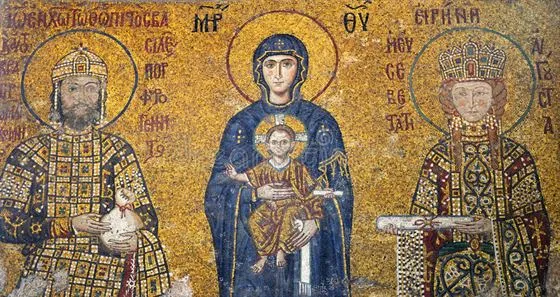
Byzantium; by the Golden Horn, Fatih, Balat, and Fener
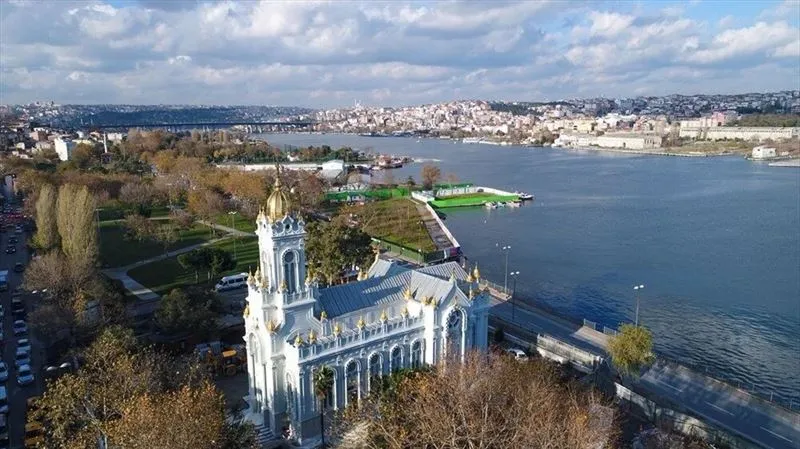
The historical city of Byzantium covered an area from the peninsula to the Golden Horn. The golden hues of this landmark are what inspired the name “Golden Horn.” Recently, many of the area’s modern structures have been demolished, and its historic structures have been excavated and turned into museums. A palace from the time of the Eastern Roman Empire sits alongside several churches and mosques. There is a special vibe to this area because of the local homes and neighborhoods.
What to See of Byzantium Istanbul
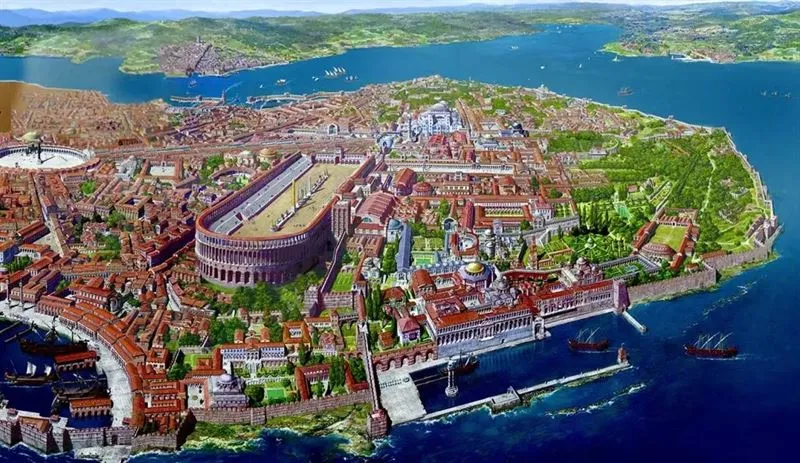
Hagia Theodosia (Gul Cami)
Theotokos Panaghiotissa (Kanli Kilise)
Kariye Mosque (former Church of the Holy Savior in Chora)
Church of Saint Mary of Blachernae (Panaya Vlaherna Holy Spring)
Pantocrator Church (Zeyrek Cami)
Constantine Lips Monastery (Feneri Isa Cami)
Theotokos Kyriotissa (Kalenderhane Cami)
Hagia Theodoro- Church Mosque of Vefa (Vefa Kilise Cami)
Church of Sergius and Bacchus (Kucuk Ayasofya Cami)
Church of Panagia Mouhliotissa, Fener
Ecumenical Patriarchate of Istanbul and Church of St. George
Istanbul’s Sacred Art Treasures
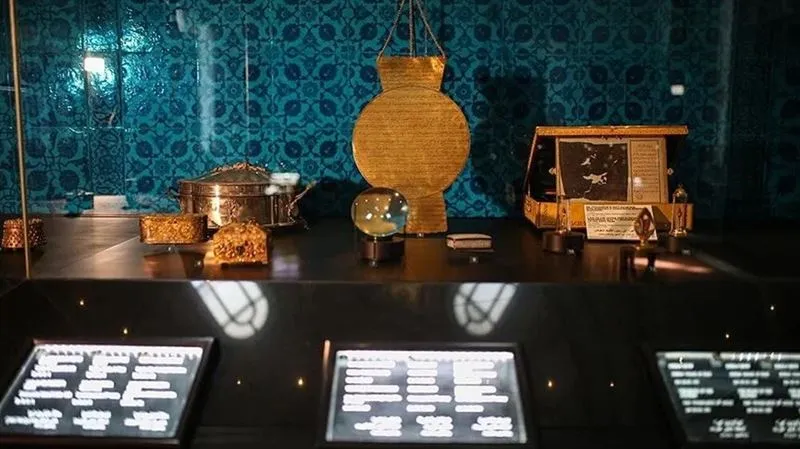
Istanbul’s Sultanahmet Square
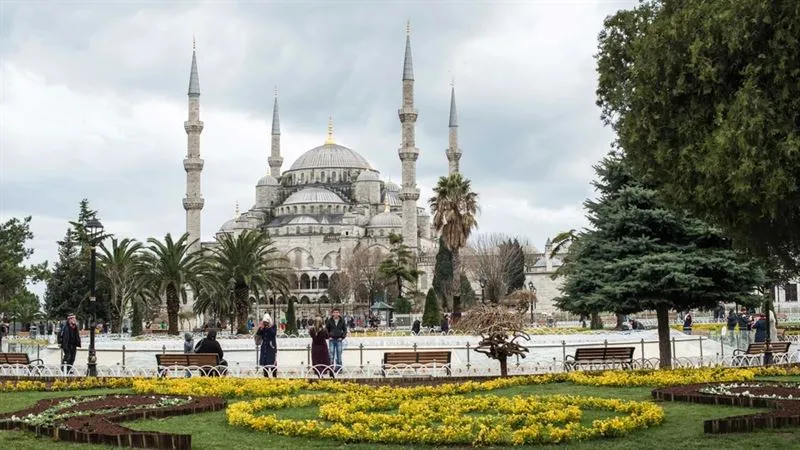
Istanbul is home to two of the world’s most impressive religious buildings, each of which was constructed by a different Byzantine emperor to honor one of God’s most prized qualities: peace or wisdom. Dedicated to Divine Peace, Aya Irini (Hagia Eirene) was constructed before the later Hagia Sophia (Hagia Sofiya). Both buildings were built by the Byzantine Emperor Constantine the Great when he built the city. They were rebuilt several times until Justinian ruled in the sixth century.
Ottoman rulers renovated and repurposed the Byzantine church of Hagia Eirene in the palace’s inner courtyard. Hagia Eirene’s apse mosaic decoration is a great example of Iconoclastic art and might be the most interesting part of the building.
Constantine the Great commissioned the original construction of the Ayasofya Grand Mosque (Hagia Sophia) in the 4th century. Final construction was completed under Emperor Justinian, and it served as the imperial cathedral of the Byzantine Empire for the next thousand years. Upon the Ottoman conquest of Constantinople in 1453, it was converted into a mosque by Sultan Mehmet II. With the help of architect Mimar Sinan, Hagia Sophia underwent extensive restoration during the Ottoman period, during which time it became one of the most significant buildings in the world thanks to the incorporation of minarets and other Islamic architectural elements. After 70 years as a museum, Ayasofya has been reborn as a mosque under the name Ayasofya Cami Kebir (the Grand Mosque), and it is now a freely accessible landmark for people of all faiths.
Istanbul is a city with a vibrant metropolitan culture
Istanbul: Karakoy, Galata, Istiklal Street, and Taksim
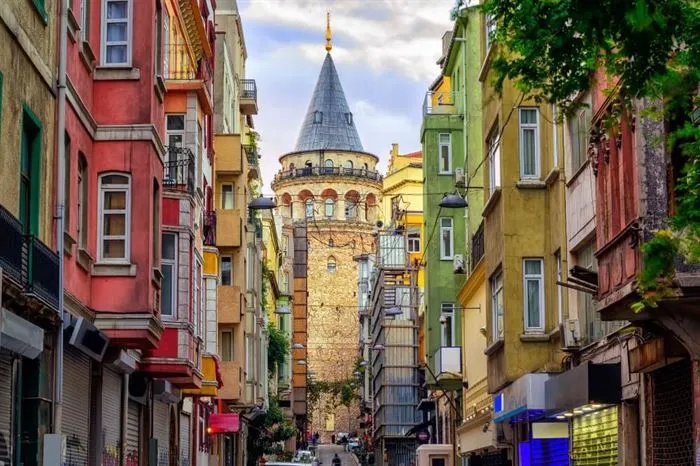
Walking route from Karakoy and Galata to Taksim along the “Grand Rue de Péra”
Karakoy, located on the Bosphorus opposite the Historical Peninsula, serves as a link between the past and the present. Karakoy became a cultural and religious crossroads because it was the city’s main port and hub for shipping and commerce.
One of the oldest buildings in Galata, the Surp Krikor Lusarovic Church, was constructed in the 14th century. It’s been updated multiple times, and two churches have been built right next to it. It has the traditional layout of a basilica, with a single aisle covered by a cone-shaped dome.
Hundreds of thousands of White Russians fled the Russian Empire during the civil war a century ago, taking their culture and community with them as they fled to Istanbul. St. Panteleimon, one of three churches built on top of the old port buildings in Karakoy in the 19th century, is the most popular attraction there due to its beautiful frescoes and icons.
The Church of St. Anthony of Padua is a short distance from the Genoese Galata Tower (built in the 13th century) along Istiklal Caddesi. It was one of the three Levantine parishes in Beyoglu, alongside the Catholic churches of St. Mary Draperis and Saints Peter and Paul in Galata. The Italian Levantine architects Giulio Mongeri and Edoardo de Nari designed the Church of St. Anthony and oversaw its construction between 1906 and 1912. The building is an example of Venetian Neo-Gothic style. The social and spatial makeup of Pera exemplified the Orientalism of the Ottoman Empire. In the 1840s, Galata was rapidly developing into a significant mercantile port, and Istiklal Street was awash with imported goods. The population of Pera was comprised of people from many different backgrounds. Levantines, Greeks, Armenians, Jews, and Turks made up the bulk of the population. In addition to the many different Caucasian groups, there were also a sizeable number of Russians, Bulgarians, and Circassians living there.
By taking a stroll down what was once called “Grand Rue de Péra” but is now known as “Istiklal Street,” tourists can experience a taste of the multicultural Istanbul of the 19th century when people of all faiths and backgrounds lived side by side. Garabet Balyan, Hamamcibasi Minas Agha, and Hovhannes Serveryan’s Armenian Church of Three Altars (Surp Yerrortutyun Armenian Church, Uc Horan Kilisesi) is a striking local landmark. Crimea Memorial Church, or Christ Church as it is more commonly known, is a Gothic-styled Anglican church built in the nineteenth century. At the intersection of Istiklal Street and Taksim Square, you’ll find Hagia Triada Greek Orthodox Church (Holy Trinity), the largest church on Istiklal Street. It was the first church to have a dome since the time of the Byzantine Empire. It was built in the 1800s.
Topkapi Palace’s Sacred Treasures
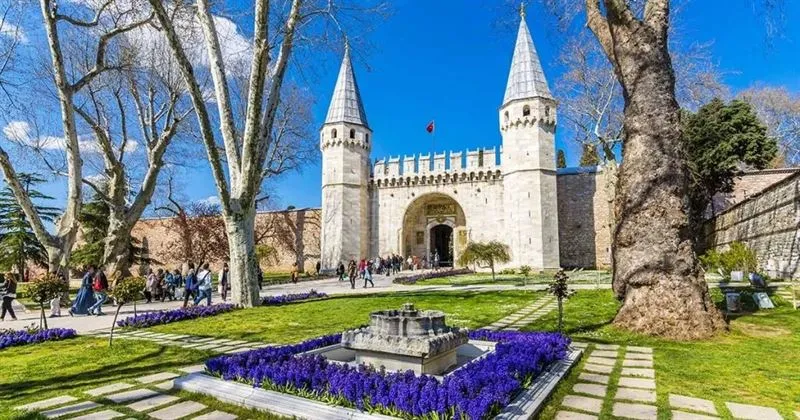
Istanbul Sultanahmet Square
Has Oda, the Sultan’s Privy Chamber, is located in Topkapi Palace, the administrative and residential center of the Ottoman Empire, and is home to priceless sacred relics. The key to the Ka’bah and other priceless artifacts associated with the Prophet Muhammad (s.a.w. ), his daughter, son-in-law, and companions have been safely stored at Topkapi Palace for the past 500 years. The mantle of the Prophet Muhammad (s.a.w. ), the Hirka-i Serif, was brought to Istanbul by Selim I. at the height of its importance. The hair from Prophet Muhammad’s beard, known as the Sakal-i Serif, is another priceless artifact (s.a.w.).
Grand Mosques of the Ottoman Empire
From Istanbul to Edirne and Bursa
The Ottoman sultans’ mosques are known as Selâtin mosques because of their architectural style. The mosques were massive, with multiple minarets. The Grand Mosque (Ulu Cami) and Green Mosque (Yesil Cami) in Bursa, the first capital city of the Ottoman Empire, are the first Selâtin Mosques of the Ottoman period. The Bayezid Mosque, constructed by II. Bayezid is widely regarded as the oldest Selâtin mosque still standing in Istanbul.
Istanbul, the third and last capital city of the Ottoman Empire, has the most important Ottoman buildings.
The Suleymaniye Mosque is a great Ottoman mosque with a charming courtyard and surroundings, and it was commissioned by Suleyman the Magnificent to the great imperial architect Sinan. The best examples of the well-known Iznik tiles can be seen in the Sultanahmet Mosque, or the “Blue Mosque,” as it is known in the West. In addition to the large mosques already mentioned, you can learn more about Ottoman aesthetic preferences by touring smaller but no less charming mosques like the ones in Rustem Pasha (Rustempasa) and Sehzade.
For nearly 600 years, the Ottoman Empire had its capitals in three different cities, each of which became a cultural and architectural treasure under its rule.
Hadrian, the great Roman Emperor, is the inspiration for the name of the Ottoman Empire’s second capital city, Edirne. Beyazit Kulliye, an old hospital complex, the magnificent Ottoman bridges across the Meric (Maritsa) River, and the Selimiye Mosque, a masterpiece of the great architect Sinan, are just some of the magnificent masterpieces of early Ottoman architecture that can be enjoyed here. The one-of-a-kind cuisine and atmosphere of the old bazaar will leave visitors with fond memories.
What to See in Ottoman Islamic Era
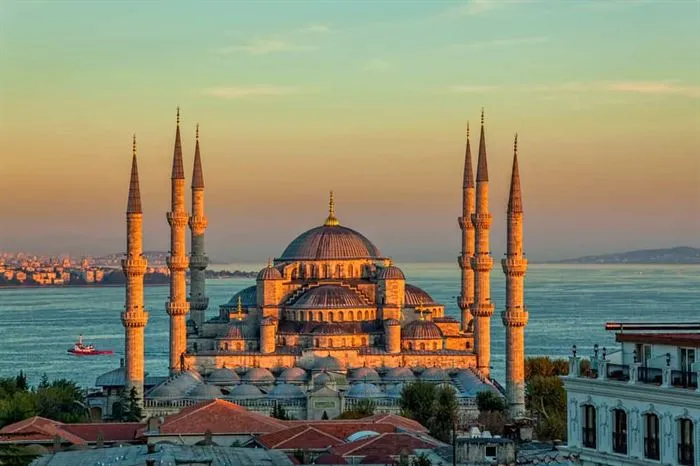
Nuru Osmaniye Mosque, Istanbul
Suleymaniye Mosque, Istanbul
Sultanahmet Mosque, Istanbul
Fatih Mosque, Istanbul
Sehzade Mosque, Istanbul
Nuruosmaniye Mosque
Yavuz Selim Mosque
Mihrimah Sultan Mosque
Dolmabahce Mosque
Yeni Valide Kulliye (complex)
Grand Bazaar, Istanbul
Beyazit Kulliye (complex), Edirne
Selimiye Mosque, Edirne
Ulu Cami (Grand Mosque), Bursa
Bursa, Yesil Turbe (GreenTomb)
Luxury Tours of Turkey
Ι Luxury Turkey Tour Package Ι Luxury Istanbul and Cappadocia Tour Ι Luxury Cappadocia Tour from Istanbul Ι Luxury Discover Turkey Tour Package Ι Luxury Istanbul and Ephesus Tour Ι Luxury Istanbul and Bodrum Tour Ι Luxury Istanbul Ephesus Pamukkale Tour Ι Luxury Discover Turkey Tour Ι Luxury Istanbul Tour Package Ι Luxury Discover Istanbul Tour Ι Luxury Istanbul and Antalya Tour Ι Luxury Istanbul Tour Ι
Luxury Turkey Travel Services
Ι Luxury Turkey Travel Services Ι Luxury Airport Transfer in Turkey Ι Luxury Istanbul Chauffeured Car Service Ι Tour Guide in Turkey Ι Istanbul Helicopter Tour Service Ι Luxury Istanbul Yacht and Charter Service Ι Turkey Private Jet Flight Service Ι
Luxury Daily Turkey Tours
Ι Luxury Daily Turkey Tours Ι Luxury Istanbul Old City Tour Ι Luxury Istanbul Bosphorus Cruise Ι Luxury Princes Island Tour Ι Luxury Self Guided Tour Istanbul Ι Luxury Cappadocia Tour from Istanbul Ι Luxury Ephesus Tour from Istanbul Ι
Attractions in Istanbul
Ι Turkey Destinations- Istanbul Ι Hagia Sophia I Topkapi Palace I Blue Mosque I Basilica Cistern I Grand Bazaar I Hippodrome I Spice Market I Bosphorus I Beylerbeyi Palace I Camlica Mosque I Dolmabahce Palace I Ortakoy Mosque I Ciragan Palace I Bosphorus Bridge I Rumeli Fortress I Kucuksu Palace I Maidens Tower I Princes Island I
